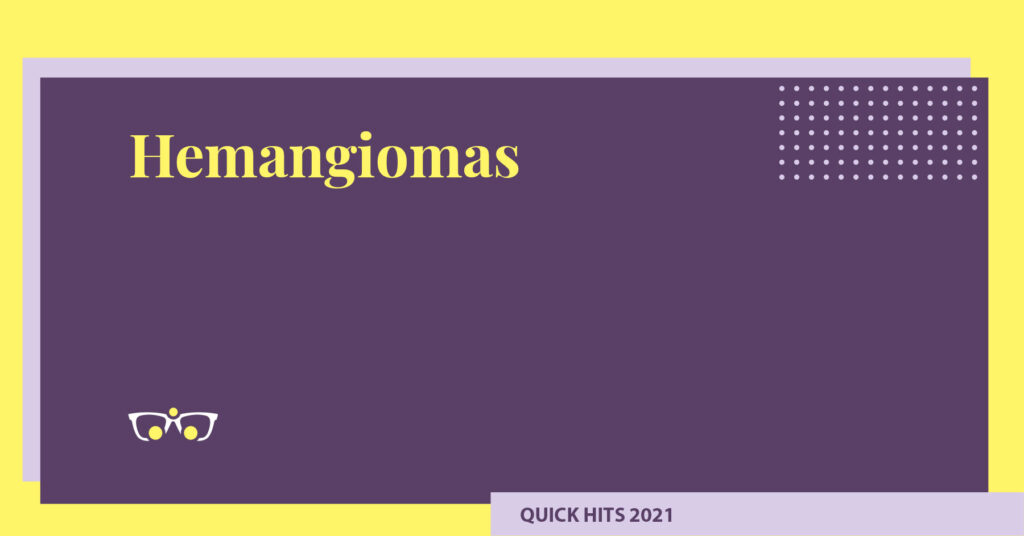Mathes and nahai muscle types
Type I flap: has one dominant pedicle
- TFL, gastroc, vastus lateralis, rectus femoris
Type II flap: dominant and minor-
- AbDM, gracilis, soleus, trapezius, biceps femoris, abductor hallucis, FDB, peroneousL/B, platysma, semitendinous, SCM, temporalis
Type III flap: two dominant:
- gluteus max, rectus abdominus, serratus, semimembranous
Type IV flap: segmental vascular pedicles
- EHL/EDL, FHL/FDL, sartorius, tibialis anterior, EO
Type V flap: dominant and segmental
- latissimus and pec
Z plasty: not indicated for PREVENTING burn scar contractures, indicated for adjusting soft tissue contour, dispersing scars, lengthening contractures
Design: central limb is drawn parallel to the line of maximal tension and subsequent limbs are drawn anywhere from 30-90 degrees from this
At least three incisions of equal length (two limbs and central incision) with transposition of the triangular flaps to create a new incision that lies perpendicular to original central incision
- W plasty: used for scars that cross relaxed tension lines, indicated over concave/convex surfaces; has decreased contracture of wound, longer OR time, must remove portion of healthy tissue –> can lead to increased tension and undermining
- Prelaminated flap: axial flap that is modified with the addition of various grafts (skin, mucosa, cartilage, bone), recreating the missing tissues at the donor site prior to flap transfer
- Prefabricated flap: created by transferring a vascular pedicle into an area of tissue that is ideal for transfer to induce angiogenesis from the pedicle into the tissue, which can then be harvested for transfer
Head and Neck
- FAMM flap: buccinator muscle (sandwiched between oral mucosa and facial artery)
- Submental myocutaneous flap: blood flow is facial artery, elevated below level of platysma muscle and includes submental artery and vein (lower and central thirds of face, inferior upper third), artery runs with belly of digastric muscle
- Temporoparietal fascial flap: supplied by STA, good for reconstruction over tendons
- Scalp reconstruction: exposed calvarium necessitates flap over skin graft. Single stage reconstruction with free flaps are preferred for patients that need post operative radiation therapy
- Large scalp advancement flaps should be left and allowed to heal
- Posterior scalp wounds: rotational flap may cover up to 6cm, perform relaxing incisions in the galea;
- tissue expansion may cover up to 50% of scalp
- Do not excise dog ears, these will resolve over time!
Upper Extremity
- PIA between EDC and EDM; AIA FDP and FPL
- Lateral arm flap: fasciocutaneous flap for small to medium sized soft tissue defects of hand, forearm, elbow. can provide vascularized bone and sensate skin paddle;
- Dominant pedicle is posterior radial collateral artery (septate perforators from profunda brachii between deltoid tubercle and epicondyle), and posterior brachial cutaneous nerve (C5-C6), 7-12cm, large amounts of bone can be harvested
- Posterior radial collateral artery located between lateral head of the triceps and brachialis
- reverse flap uses radial recurrent artery- can be turned to reach posterior elbow defects; can use 12×6 cm harvest for forearm defects and primary closure
- FCU flap: supplied by ulnar recurrent artery
- Medial arm flap: superior ulnar collateral artery (upper extremity coverage) has unreliable blood supply not typically used, artery to the biceps muscle
- Posterior interosseous flap: PI artery, pedicled for dorsal wrist and first web space; dissection can compromise ECU, EDQ;
- courses proximal deep dorsal compartment deep to supinator –> courses between ECU and EDM
- reversed is based off anterior interosseous arterial connections to PIA (conventional is elbow, antecubital fossa,volar arm)
- Anterior interosseous artery courses between FDP and FPL
- RFFF: supplied by Radial artery between BR and FCR;
- Reverse radial forearm flap: venous comitantes, radial artery, no innervation (fasciocutaneous), may take osteo segment and FPL, osteocutaneous perforators come from fascioperiosteal perforators of brachioradialis/FCR (radial artery passes between these 2)
- Can cover dorsal hand/finger defects
- Should harvest bone on radial portion between BR and PT
- Need to perform an allen’s test prior to harvest- abnormal should not harvest!
- Brachioradialis flap: radial recurrent artery, used for defects of anterior elbow
- Venous FTF: ideal defectis long/narrow on hand; usually becomes congested in first week, no composite transfers (overlying skin is typically vein with arterialized vein), may take with nerve or tendon, any donor site, difficult to monitor due to congestion, same incidence of failure as conventional flaps
Trunk
- Trapezius muscle: good for posterior neck
- Superior part supplied by branches of occipital artery
- Middle transverse part supplied by superficial cervical artery
- Inferior portion supplied by dorsal scapular artery
- Superficial cervical and dorsal cervical may have common trunk TRANSVERSE cervical artery
- Latissimus: Type V flap- great for coverage of scalp defects, primary closure for <3cm of scalp, good for chest wall reconstruction particularly after radiation or osteonecrosis etc
- T10 defects can use latissimus, trapezius will not reach
- Reverse latissimus: posterior intercostal
- Parascapular flap: circumflex scapular artery: (from subscapular artery), can be osteocutaneous, may take latissimus or serratus, rib, insensate; provides the greatest degree of leeway in positioning skin paddle in relation to bony segment; 3cm pedicle
- *remember trapezius not supplied by subscapular!
- Serratus anterior flap: skin, muscle- may include iliac bone graft, long pedicle, can be functional with long thoracic nerve, must preserve 4-5 muscle slips to prevent winging, insensate; serratus artery via the subscapular artery
- Triangular space: triceps, teres major, teres minor–> for parascapular flaps
- Quadrangular space: humerus, triceps, teres/teres- axillary nerve and posterior humeral circumflex artery
- SIEA flap (Shaw flap): superificial inferior epigastric artery; hand and forearm wounds (look for above vs below inguinal ligament)
- Pec flap: thoracoacromial artery (second part of axillary artery, branch to pectoral)
- Most appropriate intervention for ischemic flap: adequate fluid resuscitation, may use nitroglycerin paste and HBO after
- EO: intercostals (main), deep circumflex iliac and iliolumbar secondary vessels (inferior half)
- Rectus abdominus muscle (type III)
- Omental flap: R/L gastroepiploic, used for chest wall reconstruction. In order to increase length, may base it on R gastroepiploic only
- Iliac crest flap: osteocutaneous, deep circumflex artery, 6-12cm skin paddle and large bone segment, insensate
- Iliac bone free flap: deep circumflex iliac artery (from external iliac artery), travels between transveralis and tranversus abdominus, supplies IO, travels trough transversalis fascia to supply bone
- Superior gluteal artery flap: superior gluteal artery, based on internal iliac artery –> exits lateral and deep to sacrum above level of piriformis and then courses through gluteus maximus; point of emergence is between posterior/superior iliac spine and apex of greater trochanter; superior/inferior gluteal arteries separated by piriformis; superior has superficial and deep branches; superficial supplies muscle skin fat (SGAP flap)
- Gluteal rotation flap (type III flap)
- Rotation and advancement flaps have benefit to transposition flaps because they may be re-used in pressure sores
- Paraspinous: supplied by posterior intercostal,
Lower Extremity:
- Distal third defects with bone exposure typically necessitates a free flap
- Sensation: plantar sensation (tibial nerve via medial/lateral plantar nerves); dorsal foot (superficial peroneal nerve); dorsal foot (first web space) deep peroneal nerve
- Sartorius type IV flap (multiple segmental pedicles) form SFA, used for groin reconstruction (typically after exposed femoral grafts)
- Groin flap: axial pattern from superficial circumflex iliac artery –> arises common or SFA, parallel to inguinal ligament (most arise separately from superficial inferior epigastric artery 40%), 40 off common trunk 10 circumflex without superficial inferior epigastric, not sensate, pierces fascia medial to sartorius, artery courses between scarpas and sartorius, take scarpas for more reliable flap
- Design flap: long axis of the parallel and 3 cm inferior to inguinal ligament
- Good for hand/wrist defects; does not reach forearm or elbow (consider lateral arm flap)
- Gracilis flap Type II flap:
- Medial femoral circumflex blood supply, enters gracillis lateral to the muscle (deep);pedicle enters 8cm below pubic tubercle
- courses between adductur longus and adductor brevis, immediately posterior to adductor longus (adductor magnus lies posterior gracilis); distal third of skin does not receive sufficient blood supply for transfer
- Obturator nerve
- TFL (type I flap) from ascending branch of lateral femoral circumflex artery
- ALT: Third branch of the profunda femoris (descending branch of lateral circumflex) perforator to ALT, originates immediately caudad to adductor brevis muscle, pierces adductor magnus, then transverses between rectus femoris and vastus lateralis, innervated by lateral cutaneous nerve of thigh (sends perforators through these and sometimes the intermuscular spetum)
- First line for coverage of a variety of defects including head and neck, calvarial, can harvest up to 35x25cm
- Centered on the axis between the ASIS and patella
- Can include Vastus lateralis
- Vastus lateralis flap: descending branch of the lateral femoral circumflex artery, area of rotation to provide lower abdomen, groin, perineum, ischium, tronchanter, and acetabular fossa –> must reverse for knee defects
- Rectus femoris: lateral femoral circumflex artery, causes 15 degree extensor lag of knee, innervated and functional muscle that can reach the xiphoid
- Gastrocnemius: supplied by medial and lateral sural arteries respectively. Pedicled provides coverage for knee wounds
- Soleous flap: posterior tibial artery, prox pop, peroneal artery (middle/lower third reconstruction)
- Reverse sural artery flap: distally based fasciocutaneous or adipofascial flap that is used for distal third lower extremity coverage
- Perforators from peroneal artery and median sural artery, lesser (short) saphenous vein and sural nerve
- Medial condylar flap of femur (for scaphoid nonunion etc): vascular supply from descending genicular artery
- Medial Sural Artery Perforator Flap (MSAP): sural artery perforators arise from popliteal vessels, fasciocutaneous flap used for head/neck, hand and lower extremity defects
- Perforator found along a line connecting the mid-popliteal area ot the medial malleolous at the 8cm mark from the proximal end.
- Fibular free flap: peroneal artery, bone can be taken- except 6cm distal and proximally, pedicle is next to FHL in deep posterior compartment of leg,
- Skin paddle sseptocutaneous perforators from the posterior intermuscular septum, from the peroneal artery
- May take FHL with flap
- Propellor flap: based on posterior tibial artery –> if congested, dissect to main source vessel to release any attachments kinking venous comitantes, fasciocutaneous flaps, if congenstion still exists, supercharge with vein
- May derotate and use it as a delay procedure as last resort
- Lateral calcaneal flap: axial pattern flap based on lateral calcaneal artery (branch of peroneal artery), for lateral distal third defects of the ankle
- Medial plantar artery flap (instep region): medial plantar nerve, can cover calcaneal defects (arises from posterior tib), between abductor hallicus and flexor digitorum brevis, reverse flap from lateral plantar artery
- Superficial peroneal nerve to lateral leg, sural nerve to lateral foot
- Miscellaneous
- Post-operative flap monitoring- differential temperature, external doppler, laser doppler, photplethysmography
- Vibration may be used to desensitize amputation stump neuromas, can also use massage or nerve stimulation
- Always check platelet count If concerned for HITT (heparin induced thrombocytopenia with thrombosis)(multiple days on heparin and flap issues)
- Rheologic factors associated with hematologic disorders IE sickle cell can compromise perfusion (sludging etc)
- Stump neuroma desensitization: vibration, massage, transcutaneous nerve stimulation
- Leech use: Aeromonas hydrophilia- use ciprofloxacin for prophylaxis!







